Modern infantry combat isn’t just about mobility and firepower – it’s about what kind of firepower you can bring to the fight without dragging the soldier down. That’s where the Rheinmetall SSW40 throws a grenade into the old assumptions.
Traditional 40 mm launchers like the AG36 or M320 are simple, reliable, and universally loved in infantry sections for their ease of use. They slot under the rifle, shoot one round, and do what they’re told. But they’re limited – low velocity (LV) rounds don’t travel far or punch hard, and reloading takes time. In environments like Ukraine or Gaza, where drones fly overhead and enemies hide behind rubble or walls, that simplicity doesn’t cut it anymore.
Enter medium velocity (MV) rounds. These pack more power, range, and explosive options – including programmable airburst grenades. These can be set to explode above or behind cover, making entrenched enemies fair game. The SSW40 is the first shoulder-fired launcher that takes full advantage of MV ammunition – and that means bringing capabilities once limited to vehicle-mounted grenade launchers directly into a squad’s hands.
But there’s a trade-off. Soldiers aren’t robots. At 4 kg unloaded – plus ammo, optics, and accessories – the SSW40 is no featherweight. Once loaded with a full magazine of 40 mm grenades – which are big, heavy, and not the easiest to carry in quantity – the operator is carrying as much weight as a light machine gunner, without the sustained fire advantage. Field tests suggest that a single shooter with the SSW40 could replace a standalone grenadier and a drone-hunter, but they’ll need a mate humping spare ammo or risk running dry fast.
By contrast, systems like the M320 – while limited – are familiar and fast to train. Under-barrel mounting means no extra weapon to carry, and the rounds are standard-issue across NATO. The AG36 and similar systems are “set and forget” tools – they’re not precise or long-ranged, but they work, and in 90% of contact situations, that’s good enough.
Programmable MV Grenades
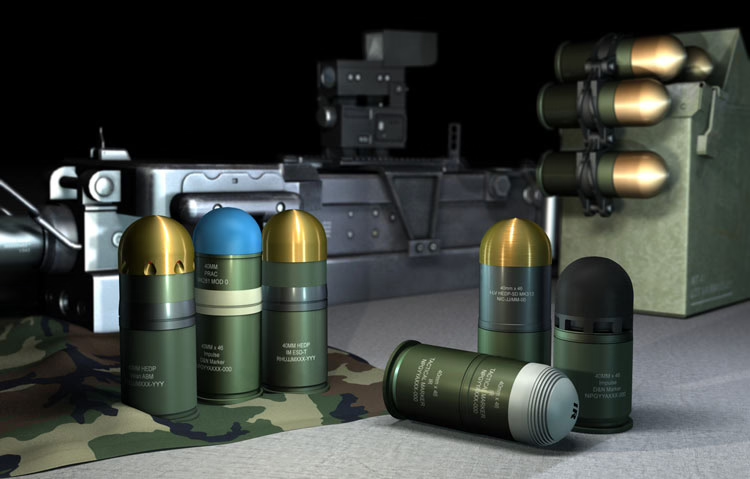
One major hurdle for systems like the SSW40 is ammunition standardisation. Most NATO forces are awash in 40 × 46 mm LV rounds – HE, smoke, illumination, and baton loads. But MV is newer, and still in the process of adoption. Rheinmetall is leading the charge with programmable MV grenades and longer projectiles, including drone-destroying airbursts. But for now, most of the Western world’s grenade belts, bandoliers, and logistics systems are built around the LV standard. Integrating MV means retraining, re-equipping, and buying entirely new ammo – a headache in peace, a logistical hazard in war.
Programmable rounds, too, aren’t cheap. Laser rangefinders, fuze-setting interfaces, battery-powered optics – all can break, malfunction, or get waterlogged. Countries with deep pockets and advanced procurement systems – like the U.S., UK, Germany – might make the leap. Others will stick with the AG36 and a pocketful of smoke grenades.
And then there’s the issue of doctrinal fit. The SSW40 wants to be a new kind of fire support weapon – something between a squad-level rifle and a tripod-mounted grenade machine gun like the Russian AGS-30/40 or the Western Mk 19. But in most Western infantry doctrines, that middle ground doesn’t exist yet. Who carries it? Grenadiers? Dismounted engineers? Drone-hunters? Special forces? It’s not obvious. Rheinmetall has made something innovative – now military planners need to decide where it fits.
The Drone Factor
What’s driven the recent wave of interest in programmable grenade systems isn’t just cover fire. It’s drones.
Drones have changed modern warfare. In Ukraine, quadcopters drop grenades from 100 feet up. In Syria and Iraq, ISIS mounted GoPros and fragmentation rounds on hobby drones. Defence planners now want organic anti-drone capabilities at squad level – something short of a SAM but better than shouting and pointing.
Here, the SSW40 may shine. Its airburst capability – detonating a grenade in mid-air – offers a practical, fast, and relatively low-cost countermeasure against low-and-slow drones. No need for expensive missiles. No radar. Just a well-aimed shot and an onboard fuze. In this respect, the SSW40 could become a core element of modern infantry “counter-UAV” doctrine, replacing shotguns and desperate rifle fire with a proper answer to low-level aerial threats. But it’s still early days. And for every squad with an SSW40, you’ll need training, fire control gear, and a reliable ammo supply. If Rheinmetall’s systems work as advertised and withstand the mud, sand and snow of real deployments, they may become the new standard. If not, they’ll remain specialist tools for niche missions.
Powerful but Demanding
The SSW40 is a powerful, innovative weapon. But it’s also an awkward hybrid in search of a doctrine. It offers unmatched versatility at squad level – rapid fire grenades, programmable airburst, anti-drone, extended range – all in one soldier’s hands. But it demands a lot: new training, heavier kit, and more logistics. Whether it’s a revolution or a curiosity will depend on how willing armies are to invest in making it part of their future infantry ecosystem.
SSW40: Squad Support Weapon 40
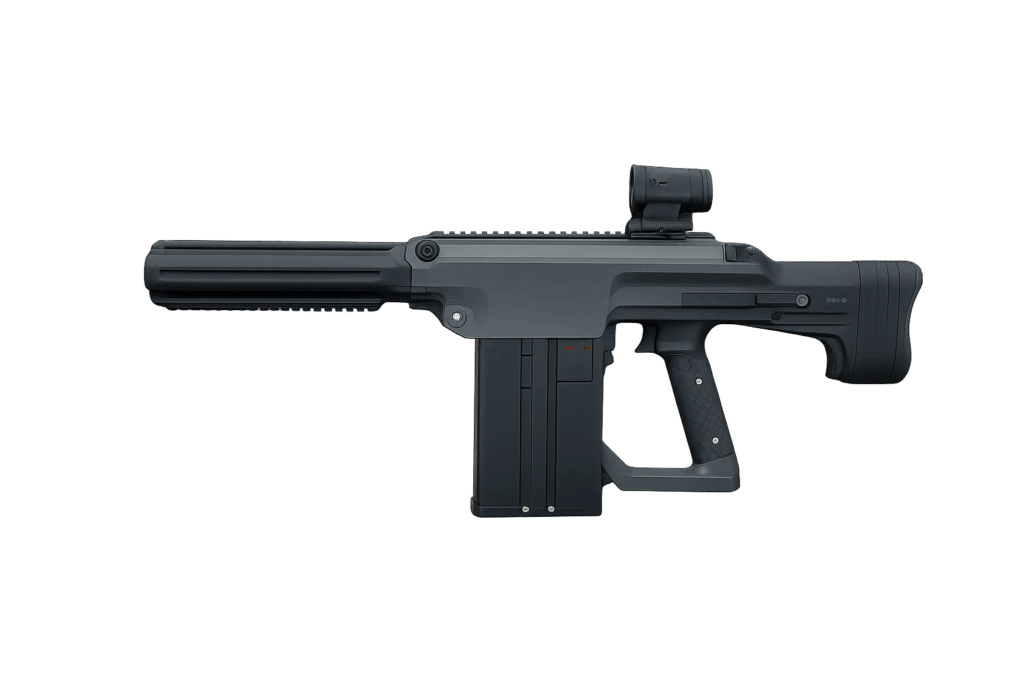
Rheinmetall’s SSW40 is a magazine-fed, shoulder-fired grenade launcher shooting both 40 × 46 mm Low-Velocity (LV) and new 40 × 46 mm Medium-Velocity (MV) rounds. Live tests report a hit range of up to 900 m—nearly three times that of typical LV systems. Its hydropneumatic recoil damper keeps it controllable despite the MV recoil. At about 4 kg unloaded and c. 80 cm length, soldiers liken it to a heavy assault rifle in handling. Airburst and anti-armour rounds on tap. Qualification due by year’s end.
- Magazine-fed (3–5 rounds), mag changes between bursts.
- Ergonomics include ambidextrous controls and a break-open barrel for longer shells (e.g. drone fuel, extra payload).
- Auto or semi-auto fire mode, theoretical rate ~300 rpm.
- MV ammo gives flatter trajectory and heavier payloads.
M320 (HK): U.S. Standard
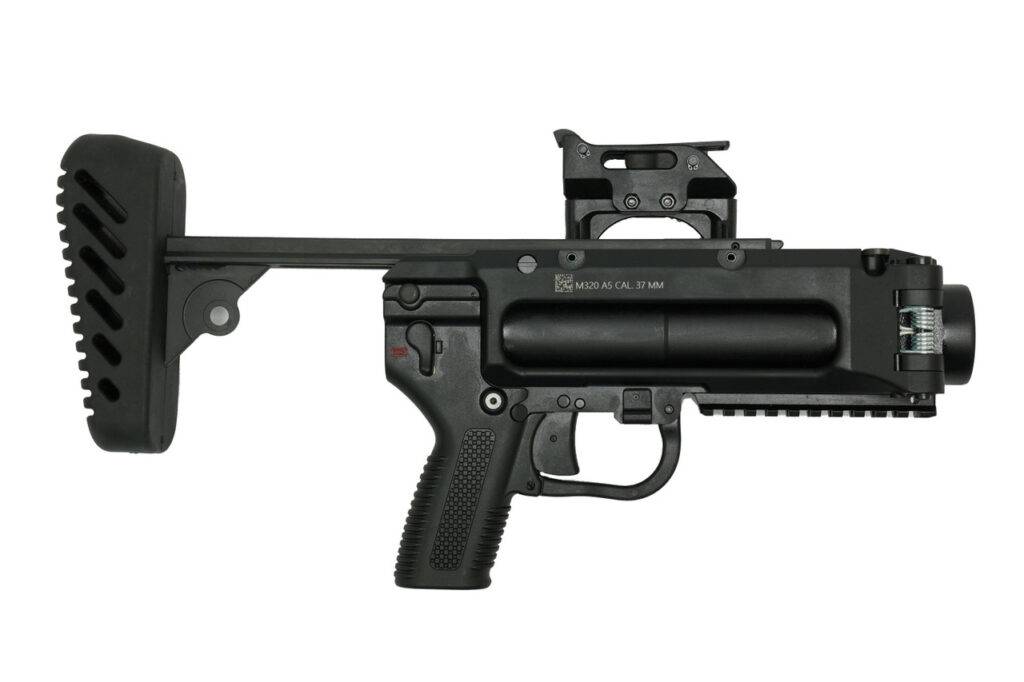
Heckler & Koch’s M320 replaced the older M203 in US service. It’s a single-shot, side-loading breech system firing only LV rounds (40 × 46 mm). It can be used under-barrel or standalone, weighs c. 1.6 lb (3.5 lb with stock). Optics include reflex and laser ranging. Loaded helmet reports: bulky when carried off-weapon, limited flexibility, but reliable.
XM25 CDTE: Specialised Airburst
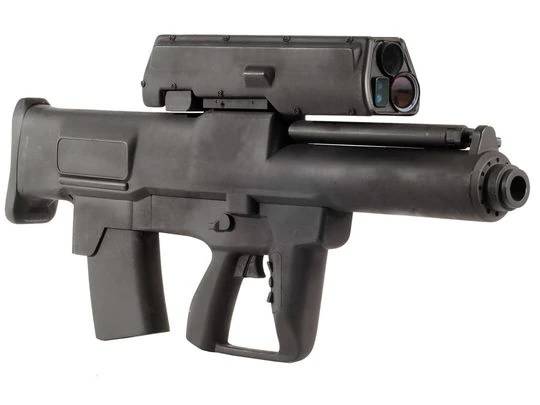
The XM25 uses 25 × 40 mm programmable airburst rounds, hitting point targets out to ~550 yd (500 m). Equipped with a laser rangefinder and fire control, it’s proven effective in Afghanistan but was heavy (~6.3 kg unloaded); ended in 2018 due to cost, technical and weight issues. Produced by Heckler & Koch.
AG36 / AG-C / EGLM: Under-barrel Workhorse
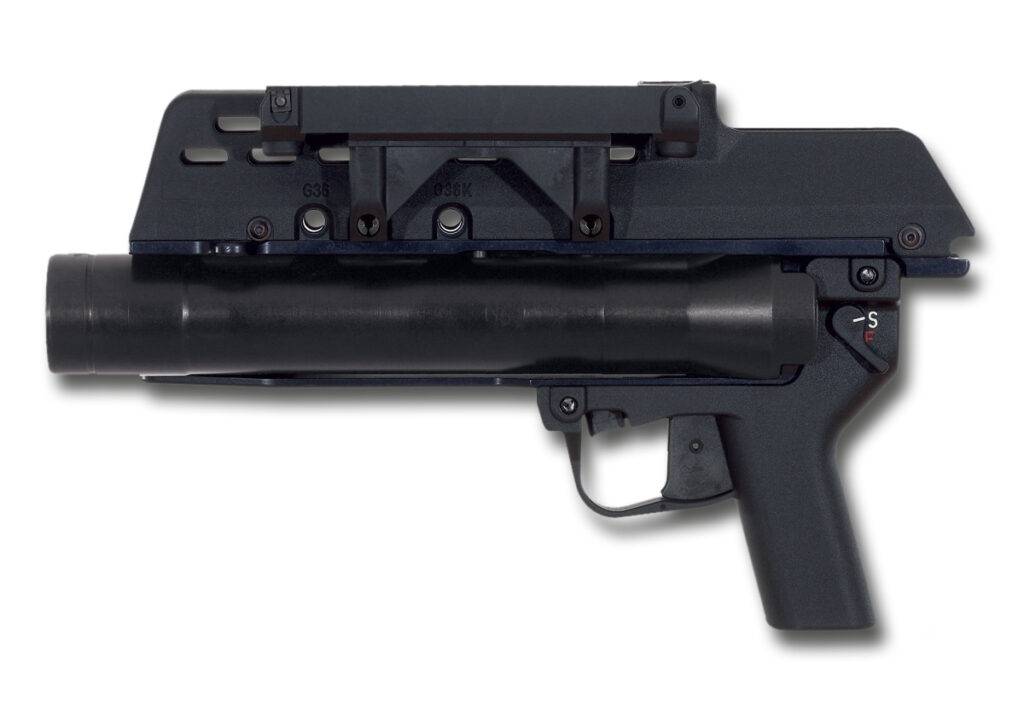
Heckler & Koch’s AG36 is a simple break-open single-shot, mounted under rifles like the G36 or L85. Fires LV ammo only, weighs ~1.5 kg, used widely in NATO. No rapid fire, no airburst—straightforward breaching and smoke workhorse.
AGS‑40 Balkan: Russian 40 mm Auto
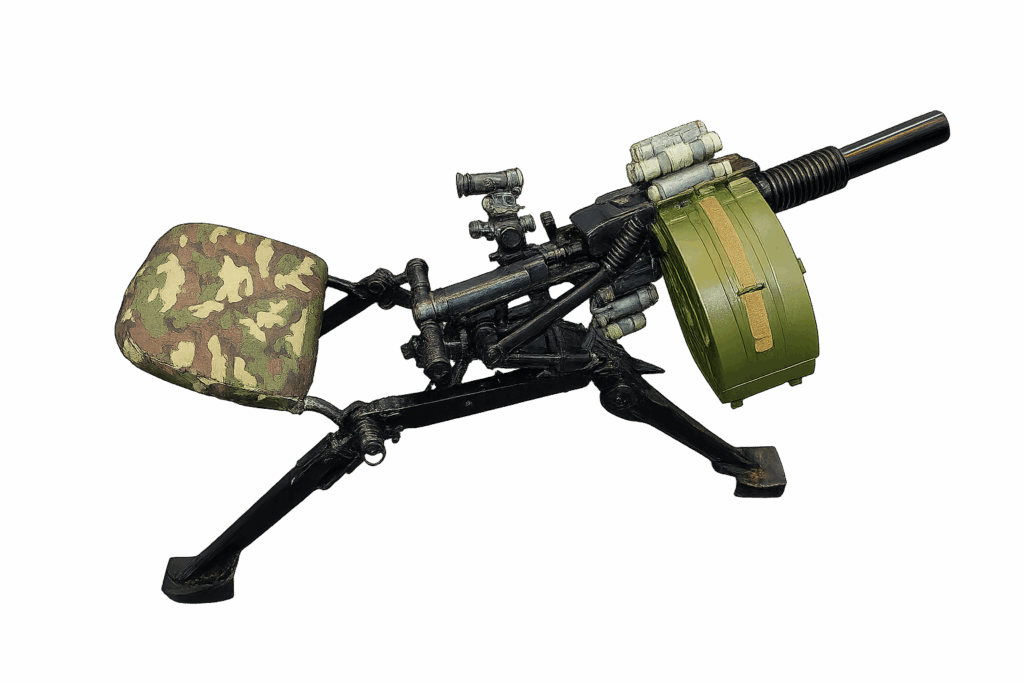
An automatic caseless 40 mm launcher firing at 400 rpm, crew-served, tripod mounted. Range to 2,500 m, weight ~46 kg loaded. Not a direct comparison—squad-level firepower, but heavy and fixed-position. Produced by Tecmash Research and Production Association.
| Weapon | Ammo Type | Fire Mode | Range | Weight | Key Pros / Cons |
| SSW40 | MV & LV 40 mm | Semi/auto, mag | 900 m | 4 kg unloaded | Magazine, airburst, but mags weigh 2 kg full |
| M320 | LV 40 mm | Single-shot | 350 m | ~1.6 kg | Simple, reliable, but limited range |
| XM25 | 25 mm airburst | Programmable | 500–600 m | 6+ kg | Excellent behind-cover kill – too heavy |
| AG36 | LV 40 mm | Single-shot | ~400 m | 1.5 kg | Light and dependable, no rapid fire |
| AGS‑40 Balkan | 40 mm caseless HV | Auto, belt-fed | 2,500 m | 46 kg | Heavy crew-served support weapon |
Field Notes
- Range & Accuracy: SSW40’s 900 m beats all handheld systems, matching XM25 in range but with a heavier payload. Caseless AGS-40 outranges everything but isn’t mobile.
- Fire Mode: Semi/burst auto gives volume fire. M320/AG36 can’t, XM25 fires single-shot airburst only.
- Weight & Carry: SSW40 at 4 kg is hefty for shoulder carry—add mags and kit, and it’s a burden. M320/AG36 are light. XM25 felt too heavy for troops, AGS-40 is tracked weaponry.
- Use Case:
– SSW40 = fire support, anti-drone, suppressing cover.
– M320/AG36 = patrol, simplicity.
– XM25 = urban point-targets until dropped.
– AGS-40 = static defence or vehicle-mounted support.
Read More:
- Rheinmetall: 40 mm Ammunition and Grenade Launchers
- Wikipedia: AGS-40 Balkan
- Wikipedia: Heckler & Koch AG36
- Wikipedia: XM25 CDTE
- Wikipedia: M320 Grenade Launcher Module
- Wikipedia: List of 40 mm grenades
- Wikipedia: SSW40
- Interesting Engineering: A German defense firm just revealed a new assault rifle-like grenade launcher
- TWZ: New Automatic Grenade Launcher Is Designed Like An Assault Rifle
- Modern Firearms: Rheinmetall Hydra / Squad Support Weapon SSW-40 grenade launcher (Germany)
- Spartanat: ENFORCE TAC 25: SSW 40 – A new boom stick for the Infantry
- TFBTV: Rheinmetall’s SSW40: Revolutionizing Squad Firepower with 40mm Automatic Grenade Launcher
- The Firearm Blog: Rheinmetall’s SSW40 40mm Automatic Grenade Launcher
- Joint Forces: Firing the Rheinmetall Squad Support Weapon 40
- Defense Update: Rheinmetall Showcase Enhanced SSW40 Grenade Rifle at DEFEA 2025
- Reddit: Any news on the SSW40 grenade launcher from Rheinmetall? And are they really useful on modern battlefield ?
- Reddit: Rheinmetall ‘Hydra’ mag-fed 40mm grenade launcher. Advertised as a replacement for the M32 MGL
- Wikipedia: Grenade launcher



